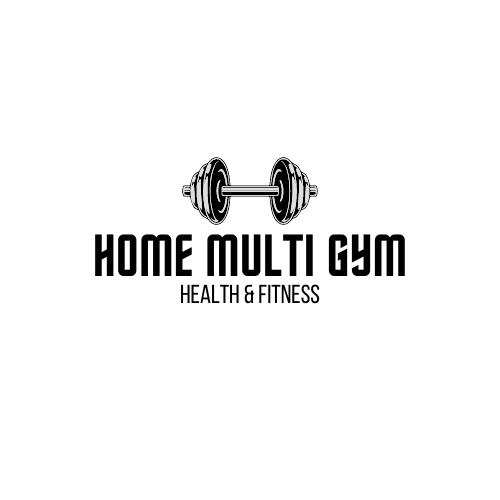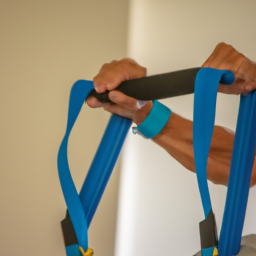Hey there! Have you ever wondered if you can perform assisted or resistance-based stretching exercises on a home multi-gym? Well, I’ve got some great news for you! In this article, we’re going to explore the possibilities of incorporating stretching exercises into your home multi-gym workout routine. Whether you’re looking to increase flexibility, improve muscle strength, or simply enhance your overall performance, you’re in for a treat!
If you’re curious to find out more about these stretching exercises and how you can add them to your home multi-gym routine, you’ve come to the right place. We’ll dive into the benefits of assisted and resistance-based stretching, explain the proper techniques to ensure safe and effective stretching, and provide you with a variety of exercises that you can try out. So, if you’re ready to take your fitness journey to the next level, keep reading! You won’t want to miss out on this valuable information.
Understanding Assisted and Resistance-Based Stretching Exercises
Assisted and resistance-based stretching exercises are two effective methods for improving flexibility, range of motion, and muscle strength. While these exercises are commonly performed in a gym or fitness studio, many individuals wonder if they can incorporate them into their home workout routines. In this article, we will explore the definitions of assisted and resistance-based stretching and discuss the benefits of performing these exercises on a home multi-gym.
Definition of Assisted Stretching
Assisted stretching, as the name suggests, involves the assistance of a partner, trainer, or equipment to help you achieve a deeper stretch. This method typically utilizes external force, such as gravity or the body weight of a partner, to increase the stretch intensity. Common examples of assisted stretching include partner-assisted stretches, PNF (proprioceptive neuromuscular facilitation) stretching, and using straps or bands to enhance the stretch.
The primary goal of assisted stretching is to improve flexibility by elongating muscles and increasing their elasticity. It can be particularly beneficial for individuals who have limited flexibility or range of motion due to muscle tightness or stiffness.
Definition of Resistance-Based Stretching
Resistance-based stretching, also known as proprioceptive resistance stretching, is a type of stretching that incorporates resistance to create tension in the muscles being stretched. This tension helps to lengthen and strengthen the muscles, thus improving flexibility and range of motion. Resistance-based stretching can be performed using various devices, such as resistance bands, weight machines, or a home multi-gym.
Unlike assisted stretching, which relies on external force, resistance-based stretching places emphasis on the muscles’ internal force. By gradually increasing the resistance, individuals can progressively challenge their muscles and achieve greater flexibility and strength.
Benefits of Assisted and Resistance-Based Stretching
Both assisted and resistance-based stretching offer numerous benefits to individuals who incorporate them into their workout routines. Some of the key advantages include:
-
Improved Flexibility and Range of Motion: Assisted and resistance-based stretching help to lengthen and stretch muscles, allowing for greater flexibility and increased range of motion. This can enhance performance in various physical activities and reduce the risk of injuries.
-
Enhanced Muscle Strength and Endurance: By incorporating resistance-based stretching into your workout routine, you can not only improve flexibility but also strengthen your muscles. This can lead to improved muscle endurance, stability, and overall strength.
-
Convenience and Accessibility of Home-Based Stretching: Performing assisted or resistance-based stretching exercises on a home multi-gym offers the convenience of working out in the comfort of your own space. It eliminates the need to travel to a fitness facility, saving time and money.
Now that we understand the benefits and definitions of assisted and resistance-based stretching, let’s explore how a home multi-gym can be compatible for these types of exercises.
Components of a Home Multi-gym
A home multi-gym is a versatile fitness equipment that typically includes various exercise stations, multiple weight stacks, and adjustable settings. It allows individuals to perform a wide range of exercises targeting different muscle groups. When considering whether a home multi-gym is suitable for assisted or resistance-based stretching, it’s essential to understand its components and functionalities.
Overview of a Home Multi-gym
A home multi-gym typically consists of the following components:
1. Exercise Stations: A home multi-gym may have several exercise stations, such as a chest press, leg curl, lat pull-down, and leg extension. These stations provide the necessary platforms or equipment for performing different exercises, including stretching.
2. Weight Stacks: A home multi-gym usually includes multiple weight stacks that can be adjusted to increase or decrease the resistance.
3. Adjustable Settings: The adjustability of a home multi-gym allows individuals to customize their workouts according to their fitness levels and exercise goals. The seats, backrests, and handles can often be adjusted to accommodate different body sizes and exercise positions.
Understanding the components and features of a home multi-gym is crucial for determining its compatibility with assisted and resistance-based stretching exercises.
Features and Functions of a Home Multi-gym
Here are some key features and functions of a home multi-gym that make it suitable for performing assisted and resistance-based stretching exercises:
1. Pulley Systems: Many home multi-gyms are equipped with pulley systems that allow for smooth and controlled movements. These pulley systems can be used to assist with stretching exercises by providing the necessary resistance and range of motion.
2. Cable Attachments: Home multi-gyms often come with various cable attachments, such as straps or handles, which can be used for assisted stretching exercises. These attachments enable individuals to target specific muscle groups and perform a variety of stretches.
3. Adjustable Weight Stacks: The adjustable weight stacks on a home multi-gym provide the resistance needed for resistance-based stretching exercises. By gradually increasing or decreasing the weight, individuals can tailor the intensity of their stretches to suit their abilities and goals.
With the right equipment and accessories, a home multi-gym can serve as an effective tool for performing assisted and resistance-based stretching exercises.

